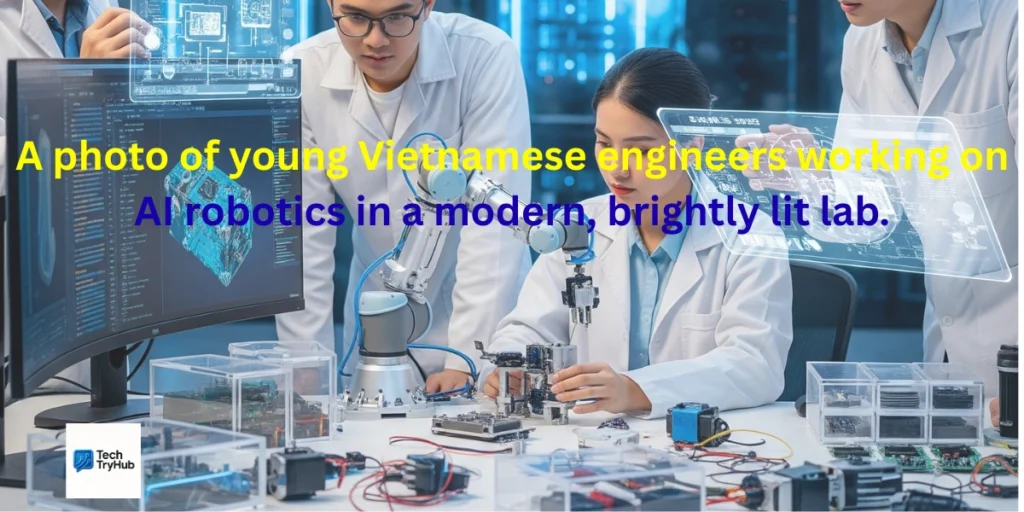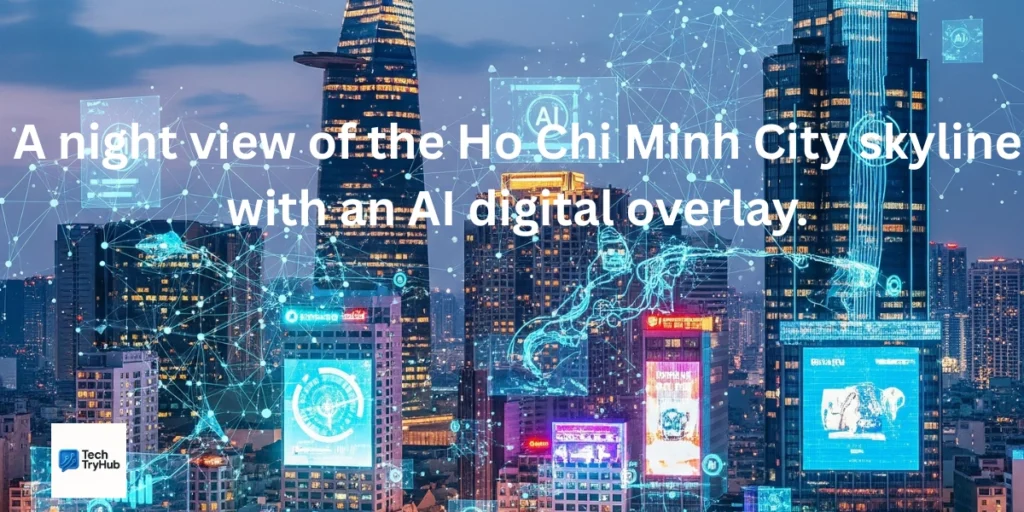Vietnam’s AI Moment
In 2023, Vietnam quietly entered the list of the world’s top 10 countries in AI readiness. For many, this came as a surprise. Just a decade ago, the country was still best known for its manufacturing base and low-cost labor force. Today, “Vietnam artificial intelligence” is no longer a distant dream — it’s a phrase investors, researchers, and entrepreneurs are taking seriously.
But how did Vietnam get here so quickly? And more importantly, what’s next for a nation trying to transform itself into a global AI hub by 2030?
Vietnam Artificial Intelligence – Current Landscape
Vietnam’s AI adoption is spreading across multiple industries:
- Finance & Banking: AI-driven fraud detection and personalized digital banking.
- Healthcare: Diagnostic tools and telemedicine platforms.
- Agriculture: Smart farming solutions powered by computer vision.
- Education: AI-based learning platforms in Vietnamese schools and universities.
The government has declared AI a strategic technology. National programs encourage R&D, while cities like Hanoi and Ho Chi Minh City are emerging as innovation centers. A young, tech-savvy population supports this momentum, with thousands of new STEM graduates entering the market each year.
Key Takeaways
- Vietnam is already in the global top 10 for AI readiness.
- AI is spreading across finance, healthcare, agriculture, and education.
- Major cities are building strong AI innovation ecosystems.
Why Vietnam Is Emerging as an AI Hub

Several factors explain Vietnam’s fast rise in AI:
- Skilled Workforce: With over 50% of the population under 35, Vietnam has a young labor force. STEM education is expanding, and international tech partnerships are creating a steady talent pipeline.
- Government Support: Vietnam’s “AI Strategy 2030” emphasizes national R&D centers, AI in governance, and international cooperation.
- Cost Advantage: Compared to Singapore or Japan, Vietnam offers lower labor and infrastructure costs, making it attractive for AI outsourcing.
Comparison: Vietnam vs. Other AI Hubs
| Country | AI Readiness Rank | Talent Pool Growth | Cost of Outsourcing | Government Support |
|---|---|---|---|---|
| Vietnam | Top 10 | High | Low | Strong |
| Singapore | Top 5 | Medium | High | Very Strong |
| India | Top 10 | Very High | Low | Strong |
Key Takeaways
- Vietnam’s edge lies in talent + cost advantage.
- Strong policies make it more than just an outsourcing hub.
- Competes closely with Singapore and India in AI growth.
Government Policies and National AI Strategy
Vietnam’s government has placed AI at the heart of its digital transformation agenda. Some highlights include:
- National AI Strategy (2021–2030): Targets to make Vietnam a top 4 AI leader in ASEAN.
- AI R&D Centers: Centers in Hanoi, Ho Chi Minh City, and Da Nang supporting applied research.
- Partnerships: Collaborations with giants like Google, IBM, and domestic firms.
- Education Initiatives: AI added to university curricula and national scholarship programs.
As Nguyen Manh Hung, Vietnam’s Minister of Information and Communications, stated:
“AI is not just about technology; it is about reshaping Vietnam’s position in the global economy.”
Key Takeaways
- Vietnam has a clear roadmap to 2030.
- Government-led R&D centers are fueling AI growth.
- International partnerships strengthen the ecosystem.
Investment & Startup Ecosystem

Vietnam’s AI startup ecosystem is expanding fast. In recent years:
- Fintech startups like MoMo use AI for personalized finance.
- Healthtech companies deploy AI diagnostics for rural hospitals.
- Edtech platforms bring AI tutoring into classrooms.
Venture capital interest is also rising. In 2022–2023, AI startups in Vietnam secured tens of millions in funding, though still modest compared to neighbors. Foreign investors are eyeing Vietnam as an affordable yet high-potential market.
Key Takeaways
- Startups in fintech, healthtech, and edtech are leading the AI charge.
- Foreign investors are increasingly attracted to Vietnam’s ecosystem.
- Funding is growing but still has room to scale up.
Challenges Facing Vietnam’s AI Growth
Despite progress, Vietnam faces major hurdles:
- Data Privacy: Regulations are evolving, but concerns about data usage persist.
- Talent Retention: Many skilled AI engineers move abroad for better pay.
- Research Output: Compared to the U.S. or China, Vietnam’s AI publications and patents are limited.
- Infrastructure Gaps: Limited access to high-performance computing hinders deep learning projects.
Key Takeaways
- Vietnam must balance rapid growth with responsible AI policies.
- Brain drain is a significant risk.
- Infrastructure upgrades are essential for scaling AI innovation.
The Future of Vietnam Artificial Intelligence
By 2030, Vietnam aims to:
- Rank in the top 4 AI leaders in ASEAN.
- Build smart cities with AI-driven transport, healthcare, and governance.
- Position itself as an outsourcing destination for global AI firms.
- Foster AI-powered manufacturing as part of Industry 4.0.
Experts believe Vietnam could follow a similar path to India’s IT boom — but in AI. If talent retention improves and policies remain stable, the country may emerge as a regional leader and global competitor.
Key Takeaways
- Vietnam’s AI journey is set to accelerate through 2030.
- Smart cities and Industry 4.0 will drive adoption.
- With the right policies, Vietnam can rival larger AI economies.
Conclusion
Vietnam’s journey in artificial intelligence is a story of rapid growth, bold ambition, and strategic positioning. From banking apps to smart farming, AI is reshaping daily life. Government policies, startups, and foreign investment are aligning to push Vietnam forward — but challenges like brain drain and infrastructure gaps remain.
One thing is clear: Vietnam’s AI story is just beginning. Whether you’re an investor, student, or technology enthusiast, this is the time to pay attention.
👉 If you found this guide useful, share it with others and explore our other articles on Asia’s tech transformation.
FAQ – Vietnam Artificial Intelligence
1. Is Vietnam really among the world’s top 10 in AI readiness?
Yes. Vietnam ranked in the global top 10 in 2023 for AI awareness and readiness, surprising many analysts.
2. Which industries are using AI most in Vietnam?
Finance, healthcare, agriculture, and education are the main sectors adopting AI today.
3. What role does the government play in AI growth?
The government drives AI development through the 2030 strategy, R&D centers, and partnerships.
4. Can foreign investors enter Vietnam’s AI market easily?
Yes. Vietnam encourages foreign investment in tech and AI, though investors must navigate local regulations.
5. What challenges must Vietnam overcome to compete globally?
Key challenges include talent retention, infrastructure gaps, and ensuring ethical data use.
6. Is AI education widely available in Vietnam?
Yes. Many universities now include AI in their programs, and scholarships support research abroad.